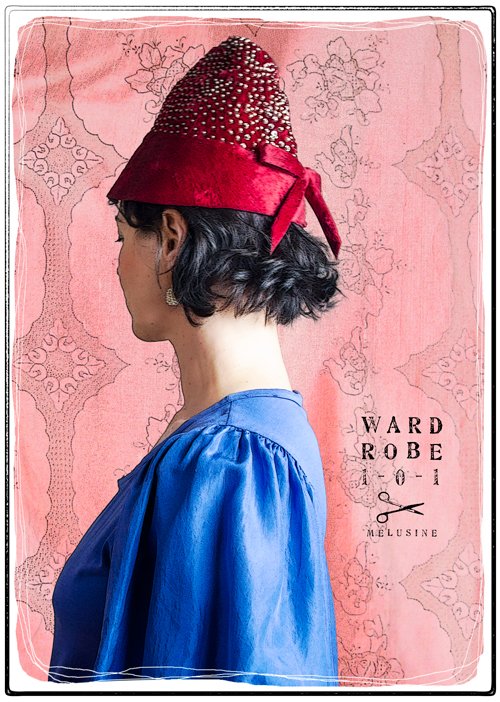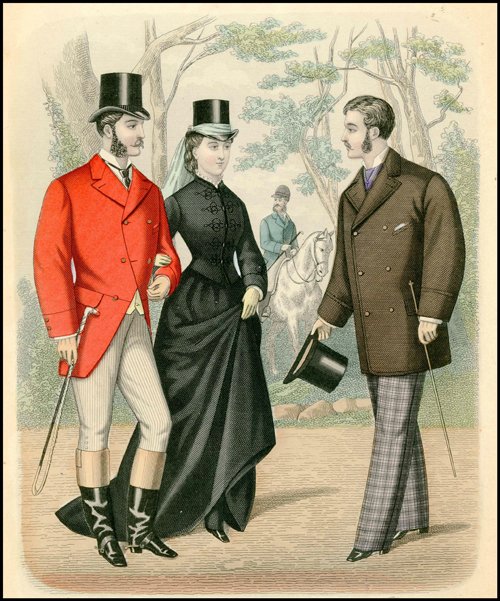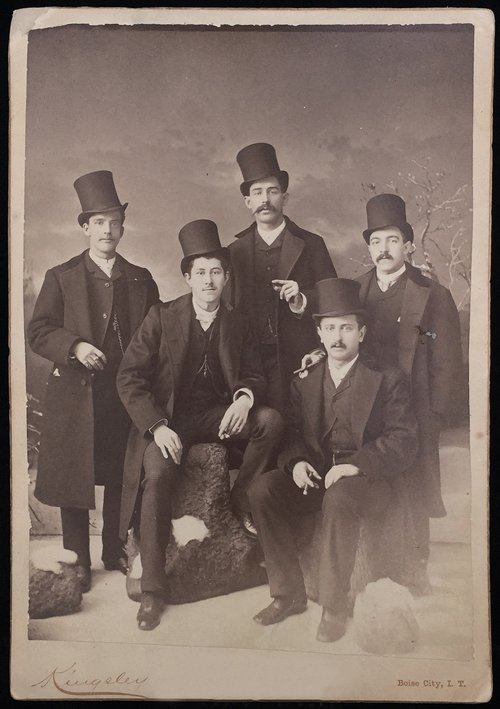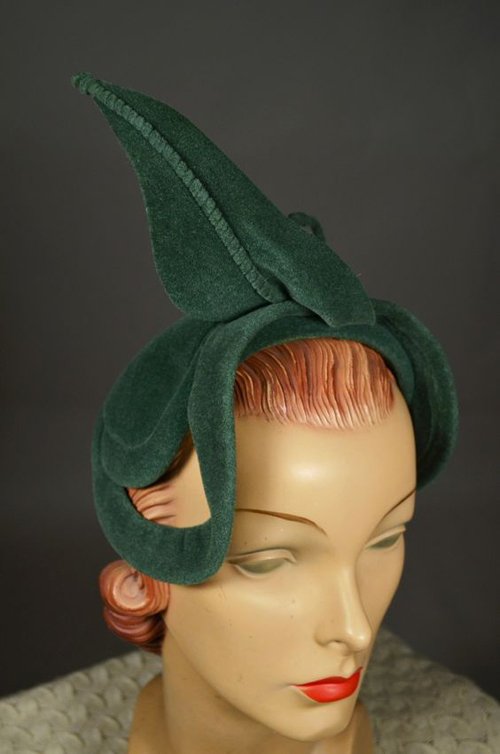The Luxury Hat
 Felt is an ancient fabric, and perhaps the first made by man: it is made rather easily as it is not woven and does not require a loom. According to legend, in the Middle Ages a wandering monk named St Clement – destined to become the fourth bishop of Rome – happened upon the process of felt-making quite by accident. It is said that to make his shoes more comfortable, he stuffed them with tow (short flax or linen fibres). Walking in them on damp ground, he discovered that his own weight and sweaty feet had matted the tow fibres together into a kind of cloth. After being made bishop (with the power to indulge his whimsy), he set up a workshop to develop felting production … and thus he became the patron saint for hatmakers, who of course use felt to this day.
Felt is an ancient fabric, and perhaps the first made by man: it is made rather easily as it is not woven and does not require a loom. According to legend, in the Middle Ages a wandering monk named St Clement – destined to become the fourth bishop of Rome – happened upon the process of felt-making quite by accident. It is said that to make his shoes more comfortable, he stuffed them with tow (short flax or linen fibres). Walking in them on damp ground, he discovered that his own weight and sweaty feet had matted the tow fibres together into a kind of cloth. After being made bishop (with the power to indulge his whimsy), he set up a workshop to develop felting production … and thus he became the patron saint for hatmakers, who of course use felt to this day.
 Parisian costume, 1826
Parisian costume, 1826 Men and women’s beaver top hats, Gentleman’s Magazine of Fashion, 1876Today most felt is made of wool, but in the past, animal fur was used to make a high-quality felt. Animal fur has tiny, microscopic spines which lock together much like Velcro when heat and moisture are applied. Beaver was the superior fur because its spines were prominent and helped produce a high-quality felt; hats made from it date back to at least the sixteenth century, and they were a staggeringly expensive luxury item. Naturally, to reduce the cost of fur felt, other furs were used such as rabbit or hare, camel, and angora (mohair).
Men and women’s beaver top hats, Gentleman’s Magazine of Fashion, 1876Today most felt is made of wool, but in the past, animal fur was used to make a high-quality felt. Animal fur has tiny, microscopic spines which lock together much like Velcro when heat and moisture are applied. Beaver was the superior fur because its spines were prominent and helped produce a high-quality felt; hats made from it date back to at least the sixteenth century, and they were a staggeringly expensive luxury item. Naturally, to reduce the cost of fur felt, other furs were used such as rabbit or hare, camel, and angora (mohair).
 Men wearing beaver hats, 1886But it was another type of hat altogether that toppled the beaver from its luxury perch at last: the silk top hat. First invented in 1797 and scandalising the general public with its fearsome appearance, by the mid nineteenth century, the silk top hat cost half the price of beaver, and overtook it in popularity owing to changes in lifestyle which meant the hardy fur felt hats were not needed.
Men wearing beaver hats, 1886But it was another type of hat altogether that toppled the beaver from its luxury perch at last: the silk top hat. First invented in 1797 and scandalising the general public with its fearsome appearance, by the mid nineteenth century, the silk top hat cost half the price of beaver, and overtook it in popularity owing to changes in lifestyle which meant the hardy fur felt hats were not needed.
 50s hat of angora fur felt; authorised reproduction of a Claude Saint-Cyr designI was initially attracted to this red 1950s pixie hat because of its dramatic shape, and the pearls (which I love) sewn all over it. It is made with Melusine, a felt made from rabbit fur. Melusine has long, fine fibres that are brushed to create a silky long-haired finish. In the past I had presumed ‘fur felt’ was a misnomer, and that such fabric was actually made from wool to look like fur. I was a bit sad when I realised this hat was real rabbit fur; however, at least it is vintage and recycled.
50s hat of angora fur felt; authorised reproduction of a Claude Saint-Cyr designI was initially attracted to this red 1950s pixie hat because of its dramatic shape, and the pearls (which I love) sewn all over it. It is made with Melusine, a felt made from rabbit fur. Melusine has long, fine fibres that are brushed to create a silky long-haired finish. In the past I had presumed ‘fur felt’ was a misnomer, and that such fabric was actually made from wool to look like fur. I was a bit sad when I realised this hat was real rabbit fur; however, at least it is vintage and recycled.
 An amazing pink fur felt reproduction Regency hat, by Jane Walton, 2019I have a few other vintage hats also made from melusine, all from the 50s and 60s. While wool felt is certainly more common these days, you can still buy new fur felt hats (some sources nebulously state the fur is a ‘by-product’) – even top hats made from beaver that are worn by top cats at Ascot – and they are still quite expensive.
An amazing pink fur felt reproduction Regency hat, by Jane Walton, 2019I have a few other vintage hats also made from melusine, all from the 50s and 60s. While wool felt is certainly more common these days, you can still buy new fur felt hats (some sources nebulously state the fur is a ‘by-product’) – even top hats made from beaver that are worn by top cats at Ascot – and they are still quite expensive.
Photo: June 2019

